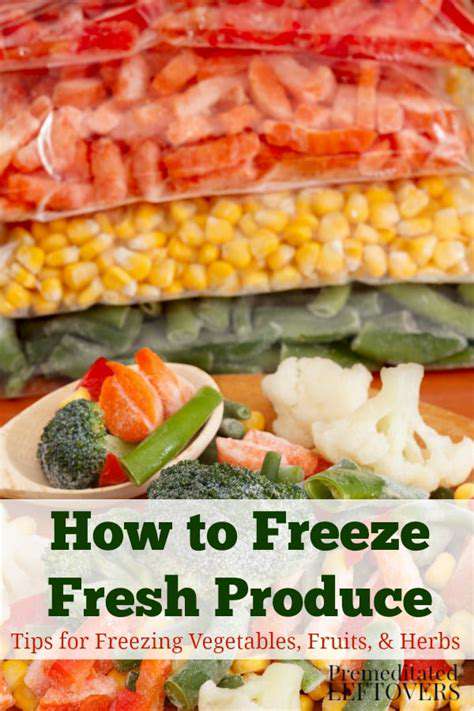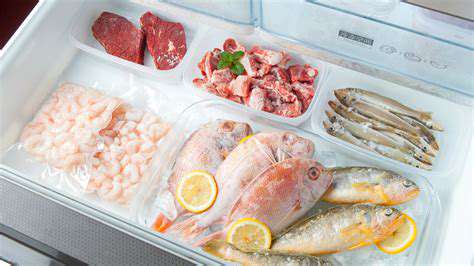Freezing Food for Later: A Comprehensive Guide
Jun 19, 2025 / btwgardenmachine/


Freezing Meat and Poultry

Safe Freezing Temperatures
Keeping your freezer at a steady, icy cold temperature is key for both safety and quality when freezing meat and poultry. Freezing food correctly stops dangerous bacteria from multiplying and helps preserve nutrients. Your freezer should stay at 0°F (-18°C) or colder to create an environment where microbes can't thrive, keeping your frozen goods safe to eat later.
Freezing Methods for Optimal Results
The way you freeze meat and poultry makes a big difference in how well they keep. Spread pieces in a single layer for even freezing and to avoid freezer burn. Sealing food in airtight containers or special freezer bags works better than other methods for keeping flavors and textures intact. This approach helps maintain quality much longer.
Proper Packaging for Long-Term Storage
How you wrap and seal frozen items directly affects how well they'll keep. Use containers or bags made for freezer use to prevent that dry, frosty texture caused by freezer burn. Squeeze out extra air before sealing, and always label packages with what's inside and the date you froze it. This makes future meal planning much simpler.
Thawing Methods for Safe Consumption
Defrosting frozen meats safely prevents foodborne illnesses. Never leave frozen meat sitting out on the counter. Instead, thaw in the refrigerator, under cold running water, or using your microwave's defrost setting. The fridge method takes longest but keeps food at safe temperatures throughout the thawing process.
Preventing Freezer Burn
That unappetizing dry, frost-covered surface on frozen food happens when moisture escapes. Combat freezer burn by using proper freezer wrap and sealed containers. Heavy-duty freezer bags or vacuum sealing work best for keeping air away from your food's surface.
Freezing Different Cuts and Types
Various meat cuts need different freezing approaches. Ground meats freeze best in small, flat portions. Whole chickens or roasts require tight wrapping to preserve moisture. Knowing these differences helps maintain food quality at its peak. Paying attention to these details ensures better taste and texture when you're ready to cook.
Freezing Meat and Poultry for Specific Dishes
If you know you'll use certain meats for particular recipes, freeze them ready-to-cook. Portion chicken breasts for stir-fries or divide ground beef for burgers before freezing. This meal prep trick saves time later and reduces waste since you only thaw what you need.
Freezing Cooked Dishes and Leftovers
Planning for Freezing
Before stashing that extra casserole in the freezer, smart planning makes all the difference. Think about serving sizes and freezer space. Dividing meals into single portions makes reheating easier later. Clear labels with contents and dates prevent future guesswork about what's in your freezer.
Proper Food Safety
Always let hot foods cool properly before freezing. Leave cooked dishes at room temperature briefly, then refrigerate until fully chilled. This two-step cooling prevents bacterial growth while keeping food safe. Proper cooling techniques protect against food poisoning while maintaining quality.
Choosing the Right Containers
Not all containers handle freezer temperatures well. Look for ones specifically marked freezer-safe. Glass works if tempered for freezing, while thick plastic containers prevent cracking. Leave some space at the top as liquids expand when frozen. Clean, dry containers seal better and keep food fresher.
Freezing Techniques for Different Dishes
Soups freeze beautifully in individual portions or freezer bags laid flat. For baked pasta dishes, line pans with foil before freezing, then pop out the frozen block to save space. Adapting your freezing method to each dish type preserves textures and flavors best. Even cookie dough can be frozen in ready-to-bake portions!
Labeling and Dating Your Frozen Food
Masking tape and a permanent marker become your best friends for freezer organization. Note both what the food is and when you froze it. Try a first in, first out system to use older items first. This simple habit prevents waste and freezer burn surprises.
Thawing and Reheating Safely
Plan ahead for refrigerator thawing – it takes time but works best. For quick defrosting, use cold water changes every 30 minutes. When reheating, stir foods occasionally and check that centers reach 165°F (74°C). Proper reheating kills bacteria while keeping meals tasting their best.